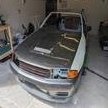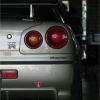First rb30 build, need advice
Announcements
-
Similar Content
-
Latest Posts
-
Remove it. Certainly from the hub face. I'm not in love with leaving it on the wheel assembly surface either - but if it is common to do so, then....maybe fair enough. It's not difficult. Just time consuming. For the hub face you just need a large enough block and suitable grades of abrasive paper to get it off flat. The same would be true of the assembly face. Just more time consuming, probably needing a lot more care. It's defo going to be easier just to assemble the wheels as is, seal them up, and check them periodically to see if there's any movement or loosening of the fasteners, than it will be to remove it though.
-
Hello, I got my wheels powder coated and they've powder coated bloody everything the mating surface and hub (even told them not to lol) anyway should I leave it or remove it. (Would be very hard) I've searched a lot and lots of powder coaters don't mask the mating surface but do mask the hub surface. How bad it powder coat on the mating surface or hub? My question is what should I do?
-
Yeah, R34 with RB25DE likely has a 4AX01 box in it, which is a medium duty auto ~ with the RB25DET mill, it would've been fitted with 4AX00 (4AX13) heavy duty build (same case, different internals). An RB25DET will lunch on a medium duty 4R01 auto in pretty short order ...to give you some visual idea of differences between the 'medium' and 'heavy duty' boxes, you only have to look at the 2/4 band for comparison...it's chalk and cheese...(plus bigger high clutch, extra pinion in the planetary sets, higher oil pump output, different bearings, higher TC stall speed )... You can control them with just about any aftermarket TCU for electric-over 4-speed with TC lockup clutch (ie; the GM 4L60E and others)...I have a custom standalone TCU that includes MAP sensor (for turbo applications) along with TPS, RPM, and line pressure monitoring...in other words, I don't use any ECU signals...no real need to.
-
If you want to do the wiring, the GTT engine ecu has the same pinouts extra that the seperate TCM in the NA car has. You can literally grab the wires/pins that lead into the Seperate TCM and wire them into the corresponding pins in the GTT Engine ECU. You could then in theory Nistune it. I realised this when everyone put it in the too hard basket and I actually looked at the f**kin R34 manual. This is after I had previously had a seperate aftermarket TCM controller in my original N/A chassis car and a very built gearbox from a GTT, running a seperate Haltech engine ECU. I ran into this issue when I re-shelled the car into a GTT shell, so my aftermarket TCM was no longer plug and play, because the loom/modules were not present. I was pretty livid when realizing just how simple the original fix actually was. It sat for 3+ years at various workshops trying to find a solution. In practice none of this is a worthwhile idea for a lot of reasons, generally surrounding the shitness of the NA auto, the autos in general that come with skylines, and the NA engine and lack of gains. The gearbox is specced for the 2.5L N/A and barely at that level. If you have to pay anyone any money to do any of this, that is money spent on manualizing the car and it's not even close in terms of a comparison. Learning to drive manual is simpler than going through the pain of dealing with the N/A gearbox and he'll have fun to boot.
-






Recommended Posts
Create an account or sign in to comment
You need to be a member in order to leave a comment
Create an account
Sign up for a new account in our community. It's easy!
Register a new accountSign in
Already have an account? Sign in here.
Sign In Now